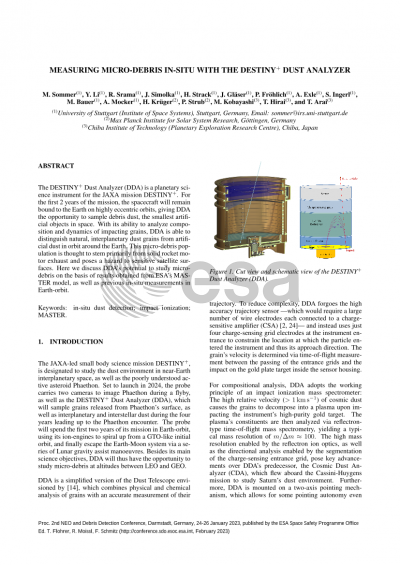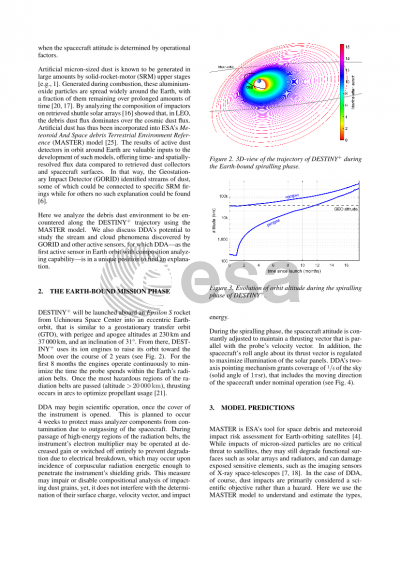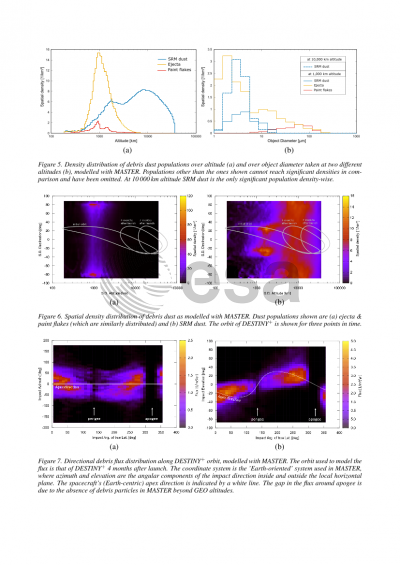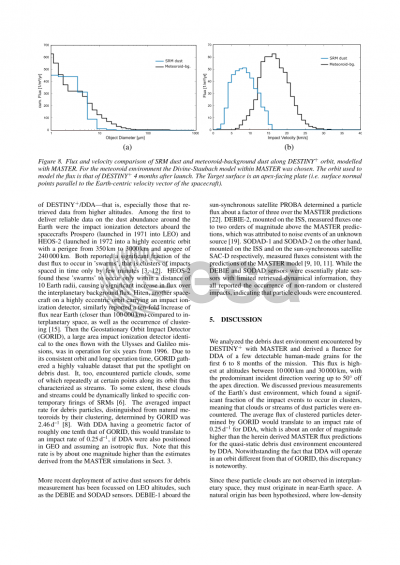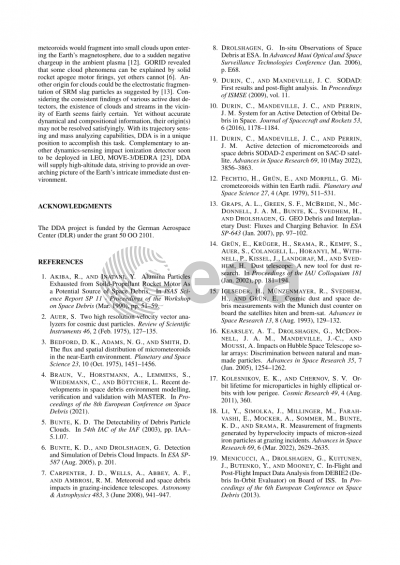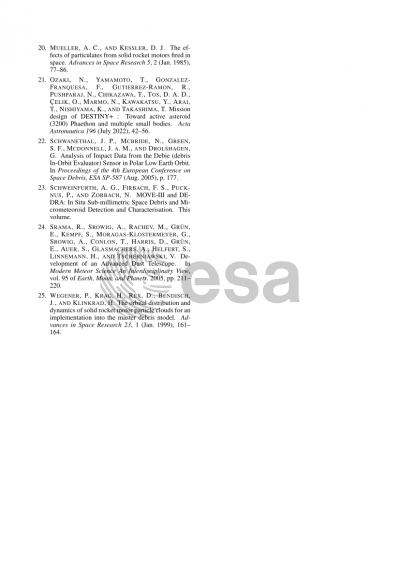Document details

Abstract
The JAXA-led small body science mission DESTINY+, set to launch in 2024, carries the DESTINY+ Dust Analyzer (DDA), an impact ionization time-of-flight mass spectrometer, which will sample the dust environment of active asteroid Phaethon in a flyby in 2028, as well as interplanetary and interstellar dust during the cruise phase. A large part of this cruise phase (~2 years) will be spent in near-Earth space, spiralling up from a GTO-like initial orbit using the spacecraft’s ion-engines to finally leave Earth-Moon system. Thus, DESTINY+ will have the unique opportunity to study micro-debris from LEO to GEO altitudes. Artificial micron-sized dust is thought to have been generated in large amounts by solid-rocket-motor upper stages.
This elusive debris population has potentially been detected by another impact ionization dust sensor, GORID, operated in geostationary orbit between 1997 and 2002. However, the instrument did not provide compositional or sophisticated dynamical information to confirm this observation. As DDA measures grain composition at high mass resolution, distinguishing debris particles from natural cosmic dust will be straightforward. In addition, the particle orbit can be constrained by knowledge of the instrument pointing combined with the impact speed, measured via charge sensitive entrance grids.
Hypervelocity dust impacts pose a threat to sensitive surfaces and are known to have caused damage to the imaging sensors of X-ray telescopes. Here we give an overview of the DESTINY+ Earth-orbit phase and the DDA instrument, and discuss its potential to study micro-debris.
Preview
